| Weight | 1 lbs |
|---|---|
| Dimensions | 9 × 5 × 2 in |
| target | Parvovirus B19 PepC (VP1 N-term) |
| species reactivity | Parvovirus |
| applications | ELISA |
| assay type | Indirect & quantitative |
| available size | 1 mg |
Parvovirus B19 PepC (VP1 N-term) Antigen BA122VSVP1C
$1,243.00
Summary
- Virion/Serion Immunologics avidity reagent for research use (RUO)
- Parvovirus, recombinant
- Suitable for detection of IgA, IgG & IgM antibodies in ELISA
- Lot specific concentration, specified in mg/mL
- 1 mg
Parvovirus B19 PepC (VP1 N-term) Antigen BA122VSVP1C
| kit |
|---|
| Research area Infectious Disease |
| Storage Store at -65°C or lower. Avoid repeated freeze-thaw cycles. 10 years from date of manufacture (under recommended storage conditions). |
| Form liquid |
| Associated products Parvovirus B19 NS1 Antigen (BA122VSNS1) Parvovirus B19 VP1 Antigen (BA122VSVP1) Parvovirus B19 PepA (VP1 unique) Antigen (BA122VSVP1A) Parvovirus B19 PepB (VP2 C-term) Antigen (BA122VSVP1B) Parvovirus B19 PepC (VP1 N-term) Antigen (BA122VSVP1C) Parvovirus B19 PepD (VP1 C-term) Antigen (BA122VSVP1D) Parvovirus B19 VP2 Antigen (BA122VSVP1E) Parvovirus B19 VLP Antigen (BA122VSVP2) Parvovirus B19 IgG Control Serum (BC122G) Parvovirus B19 IgM Control Serum (BC122M) Parvovirus IgG ELISA Kit (ESR122G) Parvovirus IgM ELISA Kit (ESR122M) |
| target relevance |
|---|
| Organism Parvovirus B19 |
| Protein names Parvovirus |
| Structure and strains Human parvovirus B19, generally referred to as B19 virus (B19V), parvovirus B19 or sometimes erythrovirus B19, is the first (and until 2005 the only) known human virus in the family Parvoviridae, genus Erythroparvovirus; it measures only 23 26 nm in diameter. Human parvovirus b19 is a below-species classification of Erythroparvovirus primate1. The name is derived from Latin parvum, meaning small, reflecting the fact that B19 ranks among the smallest DNA viruses. B19 virus is most known for causing disease in the pediatric population; however, it can also affect adults. It is the classic cause of the childhood rash called fifth disease or erythema infectiosum, or "slapped cheek syndrome". |
| Detection and diagnosis As a consequence of the variable clinical symptoms which may be associated with Parvovirus B19 infection, a clinical diagnosis should be supported by the demonstration of virus specific antibodies. |
Data
Publications
| pmid | title | authors | citation |
|---|---|---|---|
| We haven't added any publications to our database yet. | |||
Protocols
| relevant to this product |
|---|
| BA122VSVP1C protocol |
Documents
| Product data sheet |
|---|
| BA122VSVP1C |
Only logged in customers who have purchased this product may leave a review.
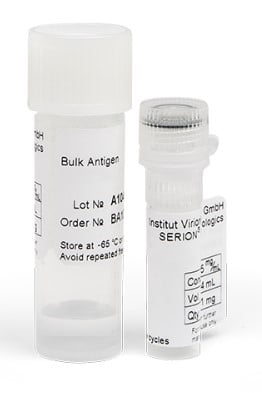
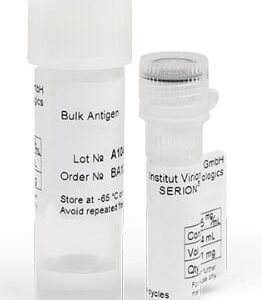
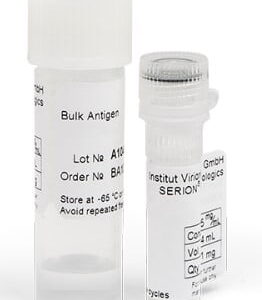
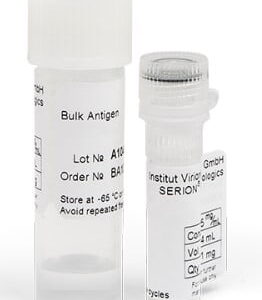


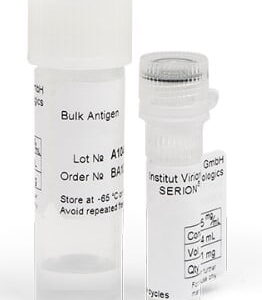
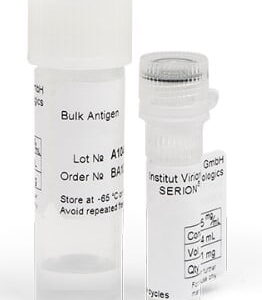

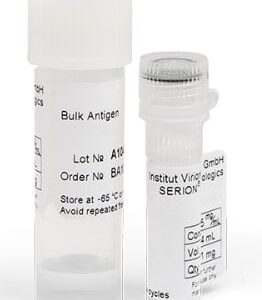


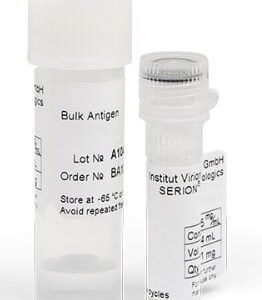
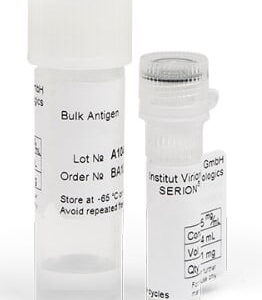
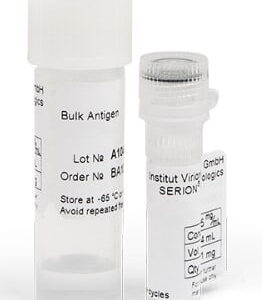
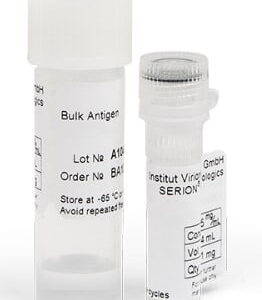
Reviews
There are no reviews yet.